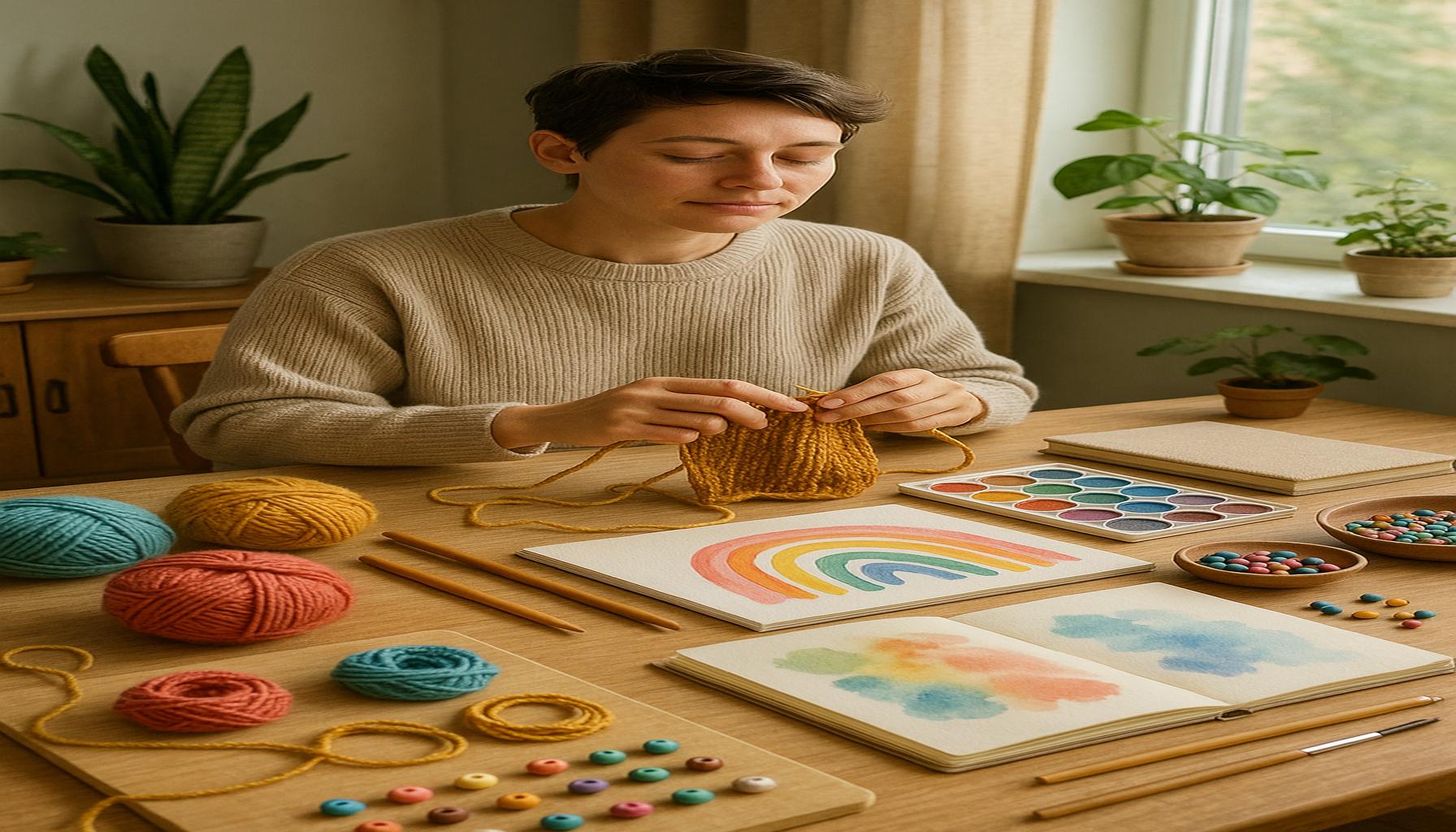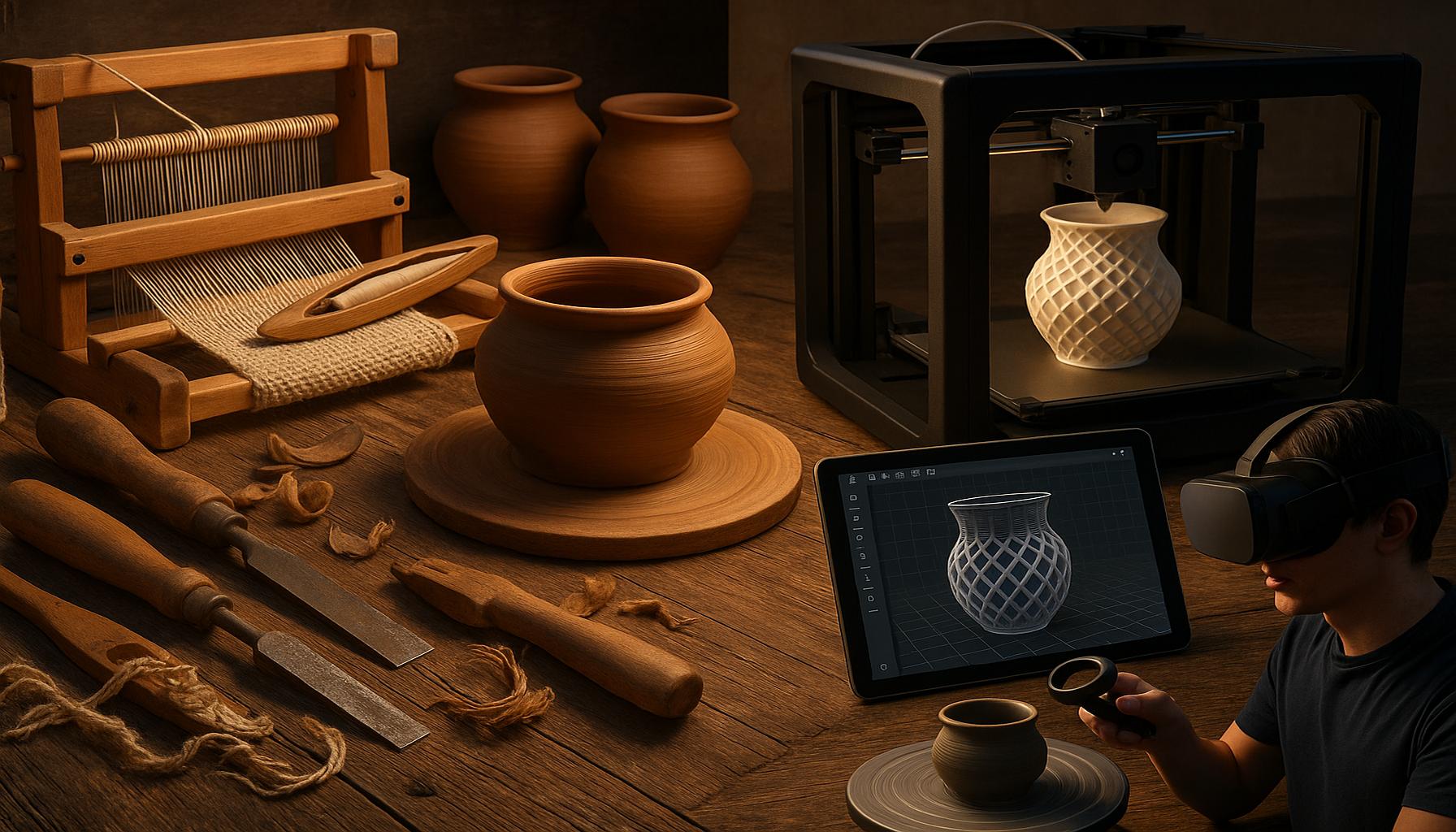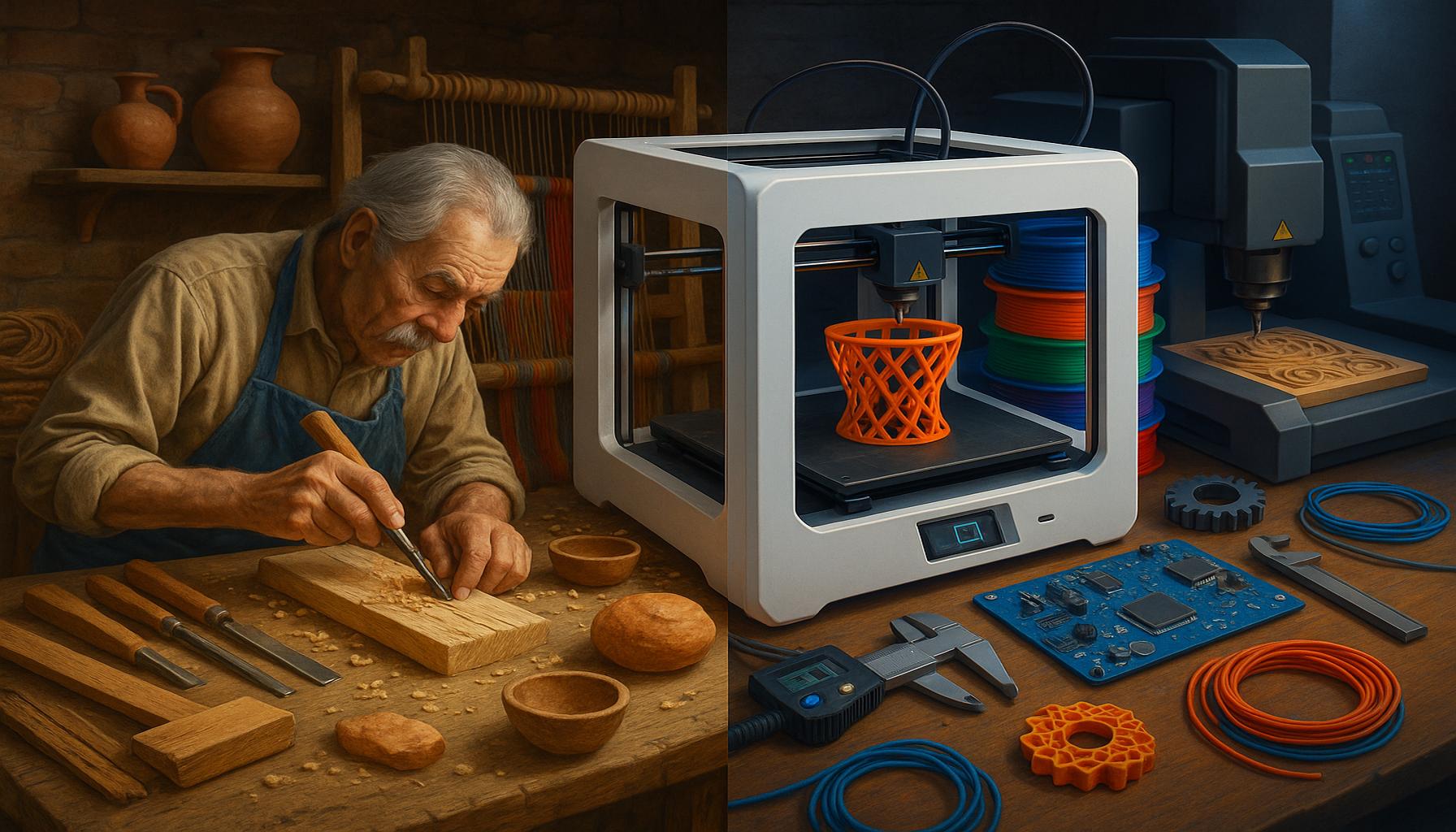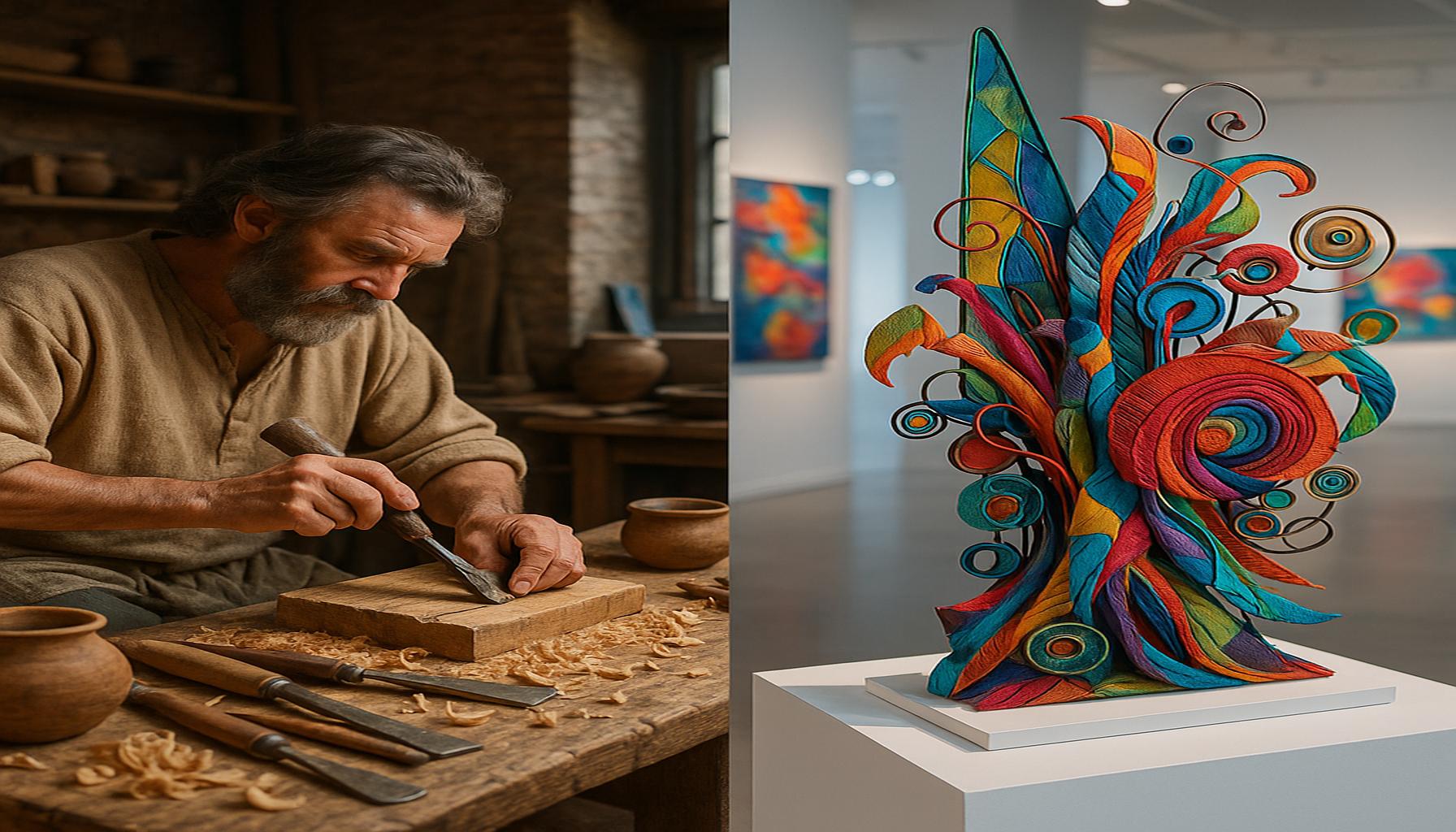The Therapeutic Impact of Crafting: How Creating Can Help with Mental Health

Exploring the Therapeutic Power of Crafting
In today’s fast-paced world, mental health challenges are more prevalent than ever. Many individuals are seeking innovative solutions to combat stress and anxiety. One surprising yet effective remedy lies in the act of creating.
The process of crafting can provide a unique form of therapy, allowing people to express themselves while reaping numerous benefits, including:
- Stress Relief: Engaging in hands-on activities can significantly lower stress levels. Research has shown that activities like knitting and painting can reduce cortisol, the stress hormone, thereby providing a calm that can counteract the chaos of daily life.
- Improved Focus: Crafting requires concentration, helping to clear the mind from daily distractions. Tasks like assembling intricate models or focusing on precise measurements when sewing encourage a state of ‘flow,’ where worries diminish, and attention sharpens.
- Enhanced Mood: The creative process evokes feelings of accomplishment and joy. Completing a craft project can release dopamine, the “feel-good” neurotransmitter, which promotes a sense of happiness and satisfaction. Simple activities like coloring in an adult coloring book or creating handmade gifts can contribute significantly to uplifting one’s mood.
- Social Connections: Group crafting fosters community and reduces feelings of isolation. Participating in classes or workshops allows individuals to bond over shared interests, creating friendships that may help alleviate loneliness and provide a support system.
Various types of crafts, from knitting to painting to woodworking, tap into the therapeutic effects of creativity. In the U.S., the rising popularity of DIY projects has turned crafting into not only a hobby but also a movement aimed at improving mental health. For instance, community centers across the country have started offering workshops that focus on crafting as a form of mental health support.
Research indicates that these activities can stimulate brain function and promote mindfulness. Crafting allows for active engagement, drawing individuals away from their screens and into the tactile world of creation. It encourages present-moment awareness, akin to meditation, offering a much-needed reprieve from the distractions of modern life.
Understanding the profound relationship between crafting and mental health may lead to new approaches for those grappling with emotional distress. People from all walks of life are discovering how incorporating crafting into their routines not only nurtures their creativity but also bolsters their overall mental well-being. In a society that increasingly recognizes the importance of mental health, crafting offers an accessible, enriching avenue for self-improvement and emotional healing.

DISCOVER MORE: Click here to unlock your creativity
The Multifaceted Benefits of Crafting for Mental Health
As we delve deeper into the therapeutic impact of crafting, it’s imperative to recognize that this creative pursuit extends far beyond mere leisure activities. With its myriad forms, crafting serves as a bridge to numerous mental health benefits, ultimately aiding individuals in navigating the complexities of emotional challenges. Let’s take a closer look at how various crafting activities can enhance mental well-being.
Art as an Expression
The beauty of artistic crafting, whether through painting, drawing, or sculpting, lies in its ability to act as a powerful means of self-expression. Individuals who may struggle to articulate their feelings often find solace in expressing themselves visually. The act of creating art allows feelings of anxiety, depression, or grief to surface in a non-verbal manner, providing clarity and closure. Numerous studies have shown that art therapy, which incorporates crafting, can significantly reduce symptoms of anxiety and lead to improved mental health outcomes.
Cognitive Engagement Through DIY Projects
Engaging in DIY projects is another compelling facet of crafting that holds profound mental health benefits. Activities that involve intricate planning and problem-solving, such as woodworking, sewing, or building models, can help sharpen cognitive function. This form of mental engagement not only promotes creativity but has also been linked to better memory retention and enhanced cognitive abilities. For many, the brain becomes a dynamic tool, working through challenges, which can foster a sense of accomplishment and purpose.
Mindfulness and Presence
Crafting can also be viewed as a form of mindfulness practice. When engrossed in a project, individuals often enter a meditative state, where their focus narrows solely on the task at hand. This presence in the moment allows for the alleviation of stress and anxiety. Practices like adult coloring or embroidery invite participants to slow down and immerse themselves in the repetition of patterns or colors, fostering calm and tranquility. To enhance the mindfulness aspect of crafting, consider incorporating elements such as:
- Breathing Techniques: Pairing crafting with deep-breathing exercises can enhance relaxation.
- Nature-Themed Projects: Engaging in crafting projects inspired by the natural world can elevate mood and reinforce the connection to the environment.
- Gratitude Journals: Combining writing with crafting, like creating a gratitude journal, encourages positive reflections that promote emotional well-being.
Ultimately, the incorporation of crafting into one’s routine has the potential to act as a holistic approach to mental health. By embracing the creative process, individuals can cultivate not only their artistic skills but also their emotional resilience. As mental health awareness grows in the U.S., taking a closer look at the therapeutic advantages of crafting may very well inspire countless individuals to explore their creativity in an effort to enrich their lives.
| Advantages | Details |
|---|---|
| Stress Reduction | Crafting allows individuals to engage in a flow state, reducing cortisol levels and promoting relaxation. |
| Improved Mood | Hands-on activities like knitting, painting, or woodworking can boost serotonin levels, helping to alleviate feelings of anxiety and depression. |
| Enhanced Focus | Crafting requires concentration, which can distract from negative thoughts and provide mental clarity. |
| Sense of Accomplishment | Completing a project fosters self-esteem and a sense of purpose, key to mental wellness. |
Crafting serves as a medium for self-expression, allowing individuals to articulate feelings they may struggle to convey verbally. This expressive form can be therapeutic, enabling people to process complex emotions, especially important for those dealing with trauma or stress. Whether it’s through the repetitive motions of sewing or the creativity involved in scrapbooking, these activities cater to various personalities, providing ample opportunity for personal discovery. Additionally, participating in crafting groups can enhance social skills and reduce feelings of isolation. Connecting with others who share similar interests can provide emotional support and foster a sense of belonging, an integral factor for mental health. As mental health awareness grows, more individuals are turning to crafting as a practical, enjoyable way to nurture their mental well-being.
DIVE DEEPER: Click here to learn more about sustainable gardening
Cultivating Community and Connection Through Crafting
Crafting does more than engage the mind and foster personal expression; it also serves as a dynamic conduit for social interaction and community building. Whether through group workshops, online forums, or local crafting clubs, the shared experience of creating tangible objects brings individuals together, allowing them to form meaningful connections. These social ties can be particularly beneficial for those grappling with feelings of isolation or loneliness, which are often associated with mental health challenges.
Building Bonds Through Shared Experiences
Participating in group crafting activities can lead to a tangible sense of belonging, as individuals bond over shared experiences and passions. Research indicates that social interaction is essential for emotional well-being. Engaging in group projects like quilting bees or pottery classes not only promotes collaboration but also provides an avenue for sharing struggles and achievements. This camaraderie can reduce feelings of angst and foster a supportive environment where participants uplift one another. For instance, crafting groups across the U.S. often organize community projects, allowing members to contribute creatively while also impacting their neighborhoods positively.
The Role of Technology in Crafting Community
In today’s digital age, technology plays a transformative role in enhancing the crafting community. Online platforms and social media pages allow crafters to connect with like-minded individuals from diverse backgrounds and locations. Virtual crafting tutorials on platforms such as YouTube or creative community websites like Craftsy or Ravelry enable people to learn new skills while forming virtual friendships. These interactions can provide crucial social support, offering enthusiasts a sense of normalcy and connectedness during challenging times, such as during the COVID-19 pandemic when many turned to crafting as a form of emotional relief.
Mind-Body Connection: Crafting for Stress Relief
Intriguingly, the act of crafting has been linked to physiological benefits that can ameliorate stress levels. Engaging in repetitive, focused craft tasks has been shown to lower cortisol levels, a hormone associated with stress. Knitting, crocheting, or even assembling model kits can shift attention away from stressors, allowing individuals to enter a state of flow—a mental space where the mind feels at ease, and time seems to dissolve. Furthermore, a study published in the Journal of Positive Psychology found that individuals who engaged in creative activities reported higher levels of positive emotions, providing a clear link between crafting and reduced anxiety.
Therapeutic Crafting Programs
Recognizing the myriad benefits of crafting, many mental health facilities and community organizations across the U.S. have begun integrating crafting programs into their offerings. These therapeutic crafting initiatives emphasize not only skill development but also the importance of community and support. Participants create art or crafting projects that reflect their emotional journeys, facilitating discussions about their experiences. Organizations such as The Alzheimer’s Association and Art Therapy Without Borders have notably implemented crafting workshops aimed at enhancing mood and cognitive function for various demographics, including seniors and individuals with disabilities.
- Peer Support: Crafting groups provide an avenue for individuals to share personal stories, fostering connection and empathy.
- Skill Sharing: Members often exchange crafting techniques and tips, enhancing the group dynamic and encouraging personal growth.
- Celebration of Daily Achievements: Every completed craft serves as a reminder of one’s capabilities, helping to build self-esteem and recognition within a communal setting.
The therapeutic impact of crafting is expansive, extending well beyond personal benefits to encompass community engagement and social connection. By tapping into the shared joy of creating, individuals find a sense of purpose and belonging that can significantly enhance their mental health. As more people discover these benefits, the movement towards crafting as a mental health tool continues to flourish.
DIVE DEEPER: Click here to discover eco-friendly crafting tips
Conclusion: Crafting as a Beacon of Hope for Mental Health
In an ever-evolving world filled with stressors and emotional challenges, the therapeutic impact of crafting offers a beacon of hope for individuals seeking solace. From knitting circles to community workshops, the power of creation acts as a bridge for connection, enhancing mental well-being through shared experiences. The act of crafting not only promotes focused mindfulness but also fosters a sense of belonging, providing individuals with the social support crucial for emotional resilience.
The myriad advantages of engaging in creative pursuits extend beyond simple enjoyment. Research highlights the physiological benefits that come with crafting, such as reduced cortisol levels and improved emotional states, illustrating a profound mind-body connection. With the integration of crafting programs in various mental health institutions across the United States, we witness an encouraging shift towards recognizing the essential role creativity plays in promoting psychological well-being.
The continuity of crafting during challenging times, particularly during the COVID-19 pandemic, validates its role as a form of emotional relief. As community networks grow through digital platforms, crafting continues to unite individuals from diverse backgrounds, reminding us that the journey of creation is fundamentally human and deeply fulfilling. Embracing this pursuit can empower individuals not only to express their emotions but also to build a vibrant community that thrives on shared creativity.
As the benefits of crafting gain broader recognition, it presents an important opportunity for individuals and organizations alike to delve deeper into this therapeutic approach. Ultimately, crafting is not merely about producing tangible objects; it is about crafting connections, healing emotional wounds, and nurturing a healthier mindset. By fostering creativity, we can pave the way for improved mental health and well-being in our communities.


